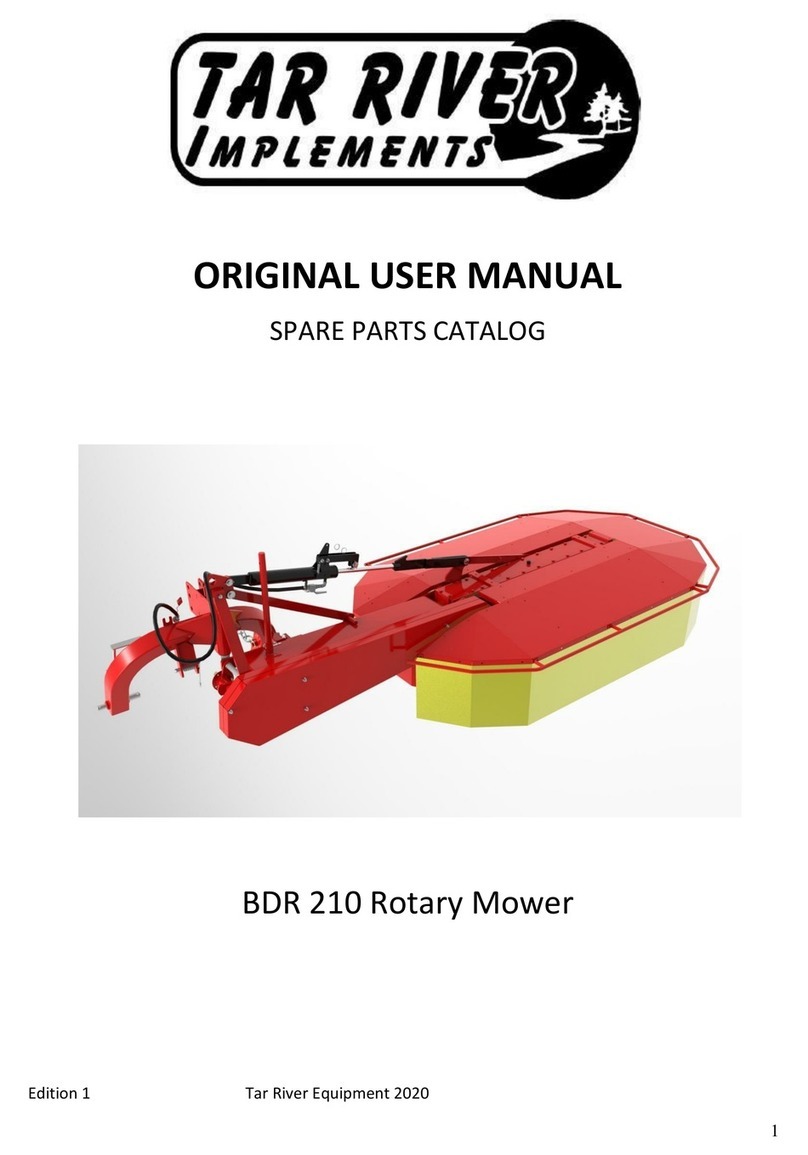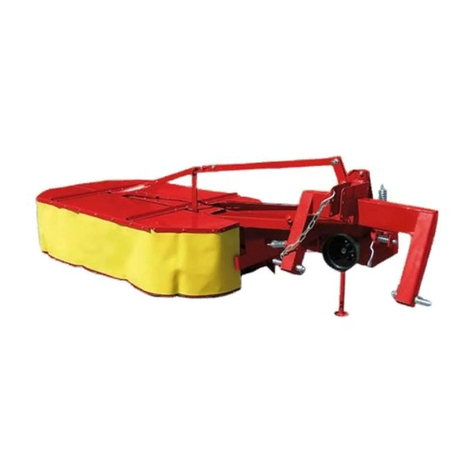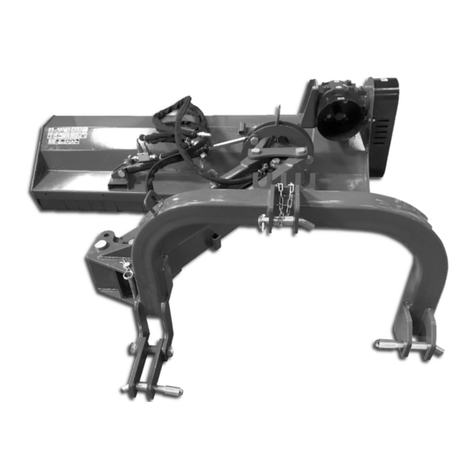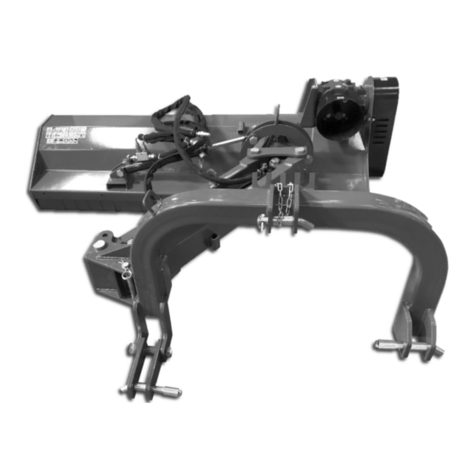
4
SAFETY RULES
PLEASE BE CAREFUL – READ THE OPERATOR’S MANUAL CAREFULY IN
ORDER TO PROTECT YOURSELF AND OTHERS FROM DANGER.
The machine should be used with respect to the basic work safety rules and the following precautions:
NEVER allow any unauthorized per sons, unfamiliar with the Oper ator ’s Manual or underage persons,
especially children, to use the machine.
ALWAYS check the physical condition of the machine, especially its wear and whether the oper ating ele-
ments of the cutting system are properly secured.
YOU MUST replace the wor n out or damaged par ts with new ones.
THE MACHINE may be oper ated only with the r ecommended tr actors equipped with the r equir ed front
axle load.
DURING the time of aggr egating the machine with the tractor , special car e should be exer cised, and it is
prohibited for any persons to be present between the machine and the tractor while the engine is on.
IT IS UNACCEPTABLE to oper ate the machine without the shields and a guard, it is also pr ohibited to
operate the machine with damaged shields and lifted guard.
IT IS UNACCEPTABLE to oper ate the hydraulic lift lever exter nally.
PRIOR TO ANY OPERATION activities per for med on the mower, it is necessar y to disengage the power
take-off drive and the engine of the tractor, pull out the key from the ignition, and allow the operating drums and
the blades to come to a complete stop.
WHILE perfor ming necessary operation activities required for the purpose of lifting the mower on the
three-point suspension system, it is very important to secure it additionally to prevent from detaching by a sup-
port or a chain.
IT IS PROHIBITED to lift the mower with the power drive tur ned on and the cylinders rotating.
IT IS NECESSARY to check whether there are any persons or animals within the danger zone pr ior to
turning the driving power on or during operating the mower.
IT IS PROHIBITED to operate the machine with any bystanders present within less than 50m perimeter.
THE FIELDS AND MEADOWS TO BE MOWED should be fr ee from any for eign and hard objects.
IT IS PROHIBITED to mow on the sides of the str eets, public r oads, public places (par ks, schools, etc.) or
places with stones in order to eliminate the risk of the hard objects thrown out.
THE MOWER SHOULD BE tur ned on only when in the oper ating position.
THE MOWING may be star ted only when the power take-off engine speed of 540 rev/min. is reached; it is
prohibited to surpass 600 rev/min.
IT IS PROHIBITED to operate the mower while driving backwards.
FOR TRANSPORT the mower should be in a transpor t position.
CHANGING the mower ’s position from the tr anspor t position to the oper ating position should be per-
formed on a horizontal and even surface, with the blades lifted above the ground.
IT IS UNACCEPTABLE to car r y on board any persons or any load while the machine is being tr anspor t-
ed or while operating it.
WHILE on the public road, applicable provisions of the Tr affic Regulations should be obeyed, and the
mower should be equipped with required lighting and warning devices in accordance to the local laws of a partic-
ular country, where the machine is used.
NOT APPLYING the r ules mentioned above may cause hazar d for the operator of the machine
and bystanders, as well as it may cause damage to the machine. For the damages resulting from the
failure to comply with these rules, the responsibility will be on the side of the mower’s user.
































